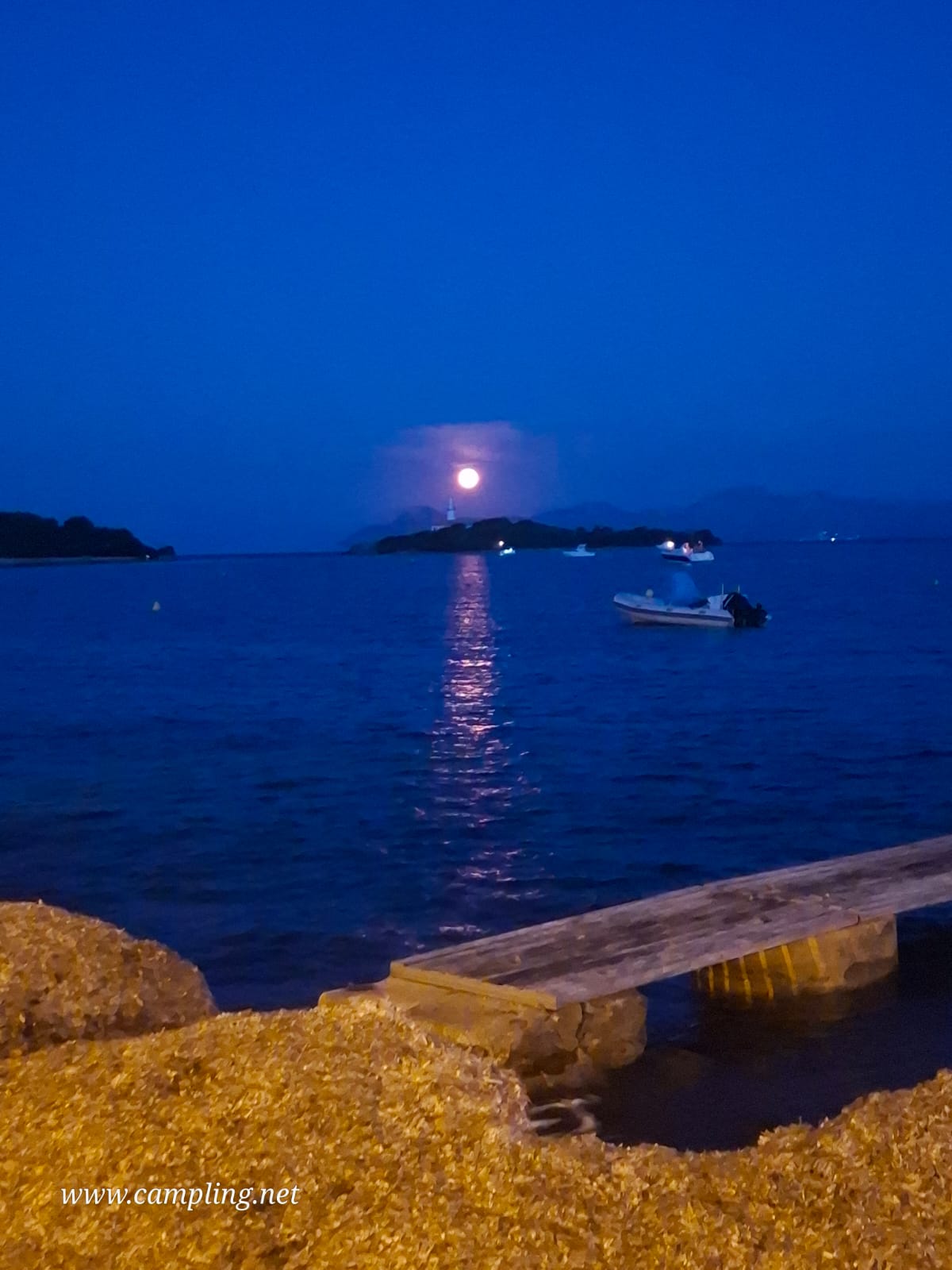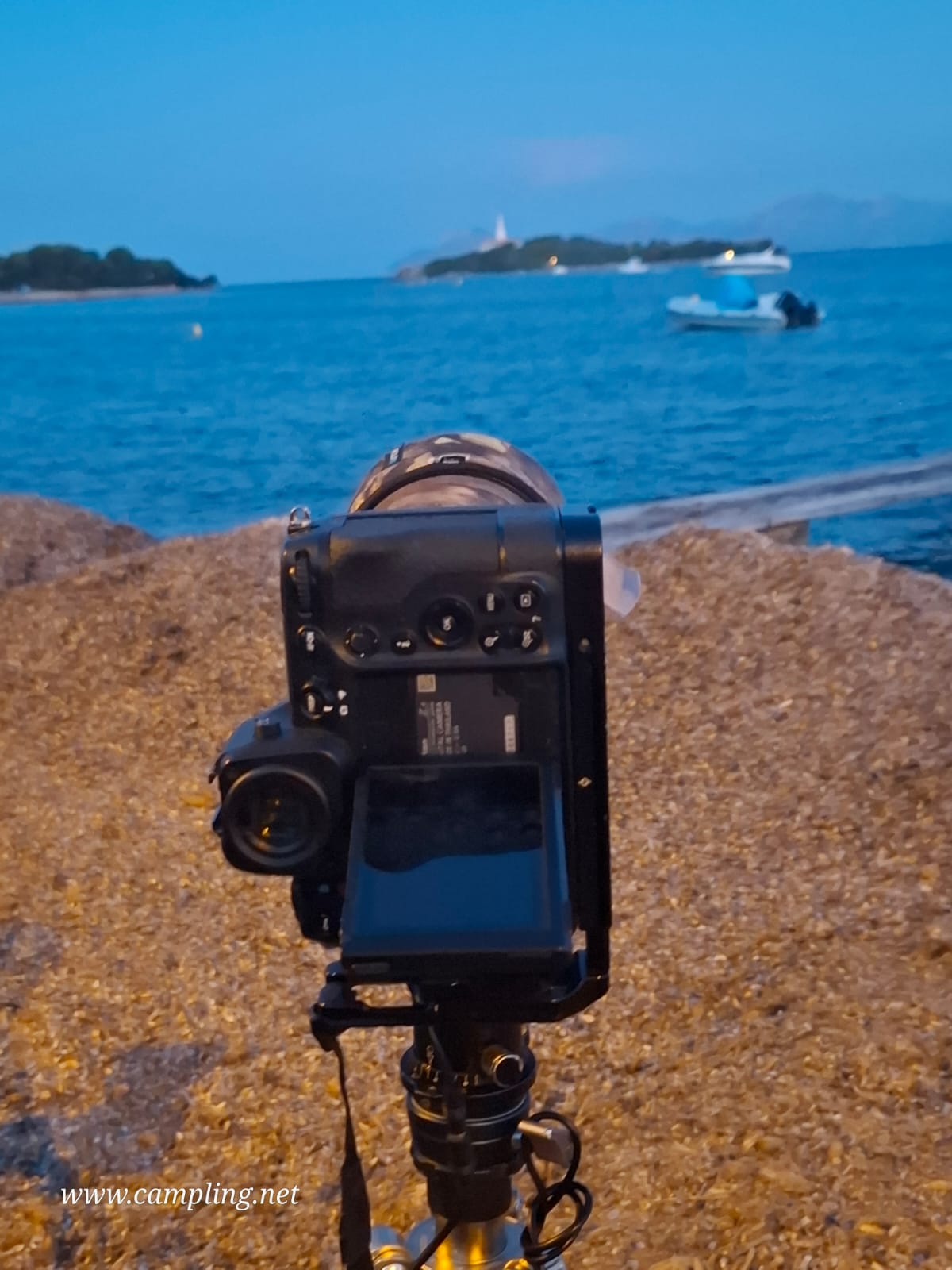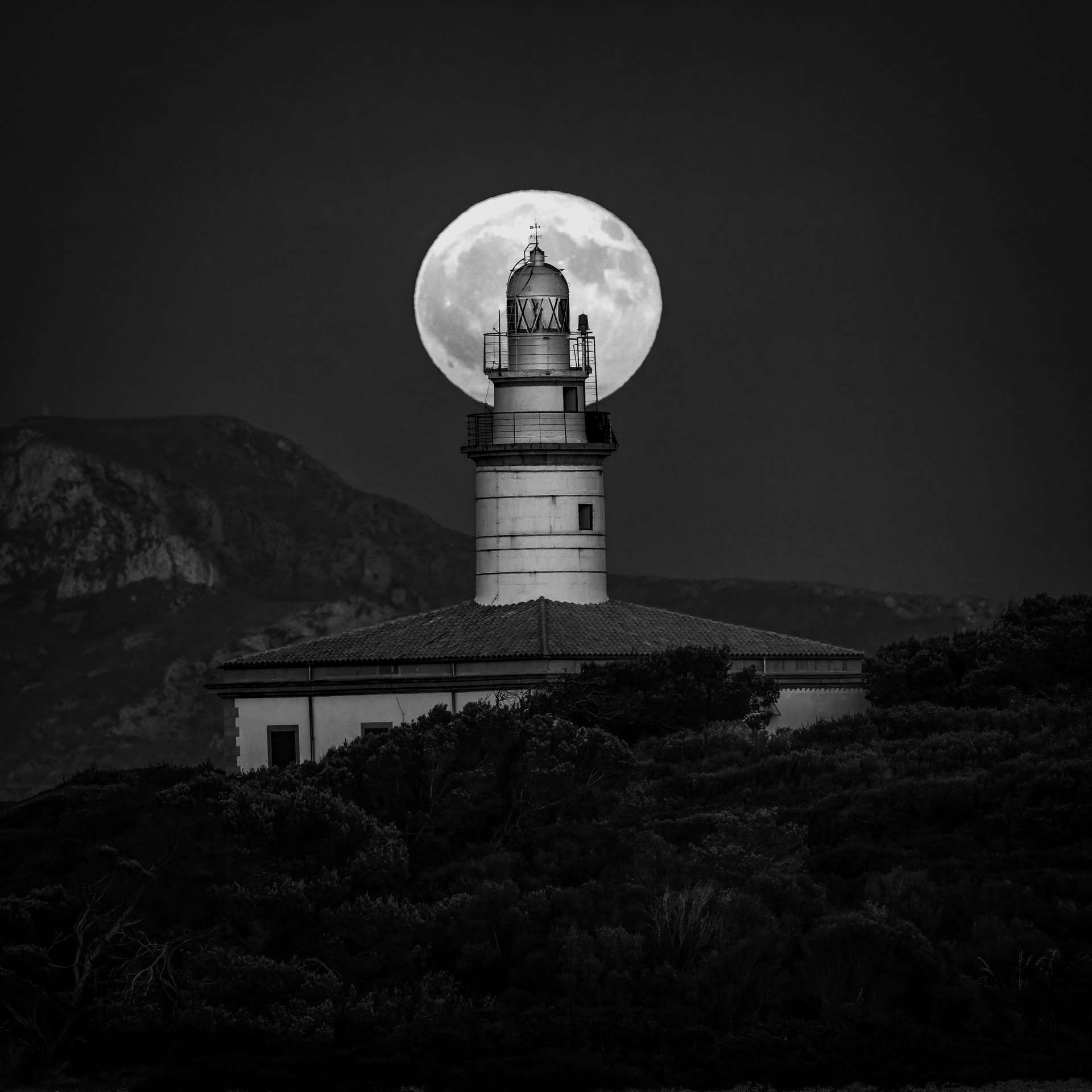Saturday night, August 9, 2025. Across the island, bars spill music into the streets. On balconies, people raise cold drinks to the warm air. I’m heading the other way — toward the dark edge of Alcanada, chasing a photograph that will last only seconds.

PhotoPills told me where to stand and when to press the shutter. Now it’s just me and the clock. I get there early, but the beach is busy — couples sharing wine, children racing the tide, smoke from grills drifting across the sand. Camper vans choke the roadside.
I circle for half an hour before finding a space. Tripod in one hand, camera in the other, I walk ten minutes to the rocks. The picture in my head is clear: the full moon, pinned behind the lighthouse beacon.
The Nikon Z8 settles on the tripod, 600 mm lens reaching across a kilometre of water. At 9:10 p.m., I fire test shots. The lighthouse holds steady in the frame. A few other photographers stand nearby, eyes fixed on the same prize.

Doubt creeps in. What if I’ve miscalculated? I stay put.
9:22. The moon eases over the mountains, pale and unhurried. Four minutes until it finds the beacon. Two photographers lift their tripods and move. I don’t.
9:26. The moon and the beacon meet — two lights merging into one. I take ten shots in quick bursts. At 9:27, it’s gone.
I pack my gear while others keep shooting. I think I’ve got it. But I’ll only know when it fills the screen, bright and whole.

